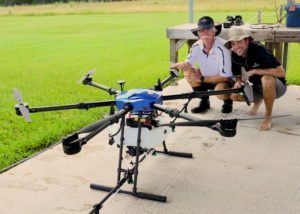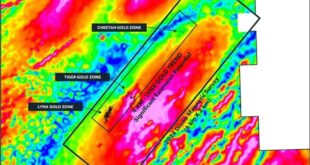Founder and CEO Bill Reynolds of Leading Edge Associates, Inc. and Leading Edge Aerial Technologies has been working on mosquito control since he entered the industry with a college internship in 1985. Now, he’s won an industry award for creative thinking and advancing public health efforts for his work in using drones for mosquito control.
Mosquitos are said to be the most dangerous animal in the world, killing millions through carrying diseases like malaria and the Zika virus. It’s a serious problem, and one that Reynolds has addressed with serious technology. He’s helped develop and patent technologies for aerial guidance and applications: his company’s original product offering was MapVision, a geospatial data management system integrates mosquito inspection, surveillance, and treatment data with real-time GIS mapping.
Now, the company is making a major impact with their drone for mosquito control. The PrecisionVision product line is designed, engineered, and built in the U.S. – with features that address the needs of the mosquito control industry. The PrecisionVision 35X “uses global positioning systems and remote sensing units on the UAS to digitally inspect large areas, record and analyze data, and create polygons, flight paths, and treatment points,” explains a company press release. “The UAS is then able to return to treat targeted areas with precision and accuracy – within 4 centimeters – all under the control of a trained and licensed UAS pilot. What once took a team of inspectors and specialty vehicles days to manage has been reduced to just hours.”
“Reynolds is a visionary,” says David Herter, Supervisor of the Bannock County, Idaho Mosquito Control and Noxious Weed programs, and principal AMCA Industry Award nominator. “His innovative thinking and intuition bring technology and science together for the greater good. These technologies empower mosquito and vector control professionals to make quicker and more informed management decisions and have set the standards for improved protection of the public and the environment.”
“Effectively managing mosquito populations is a highly technical, data-dense reality. We saw the need early on and knew that we could use technology to help agencies streamline operations with a cross-department database. The information improves their ability to respond to nuisance and vector populations,” says Reynolds. “Improving and protecting lives matters. We’re just honored to do our part.”
Miriam McNabb is the Editor-in-Chief of DRONELIFE and CEO of JobForDrones, a professional drone services marketplace, and a fascinated observer of the emerging drone industry and the regulatory environment for drones. Miriam has penned over 3,000 articles focused on the commercial drone space and is an international speaker and recognized figure in the industry. Miriam has a degree from the University of Chicago and over 20 years of experience in high tech sales and marketing for new technologies.
For drone industry consulting or writing, Email Miriam.
TWITTER:@spaldingbarker
Subscribe to DroneLife here.
https://dronelife.com/2021/04/02/drones-for-mosquito-control-engineering-new-technologies-for-an-old-problem/
 Unmanned Aerial Vehicle The latest drone news
Unmanned Aerial Vehicle The latest drone news



